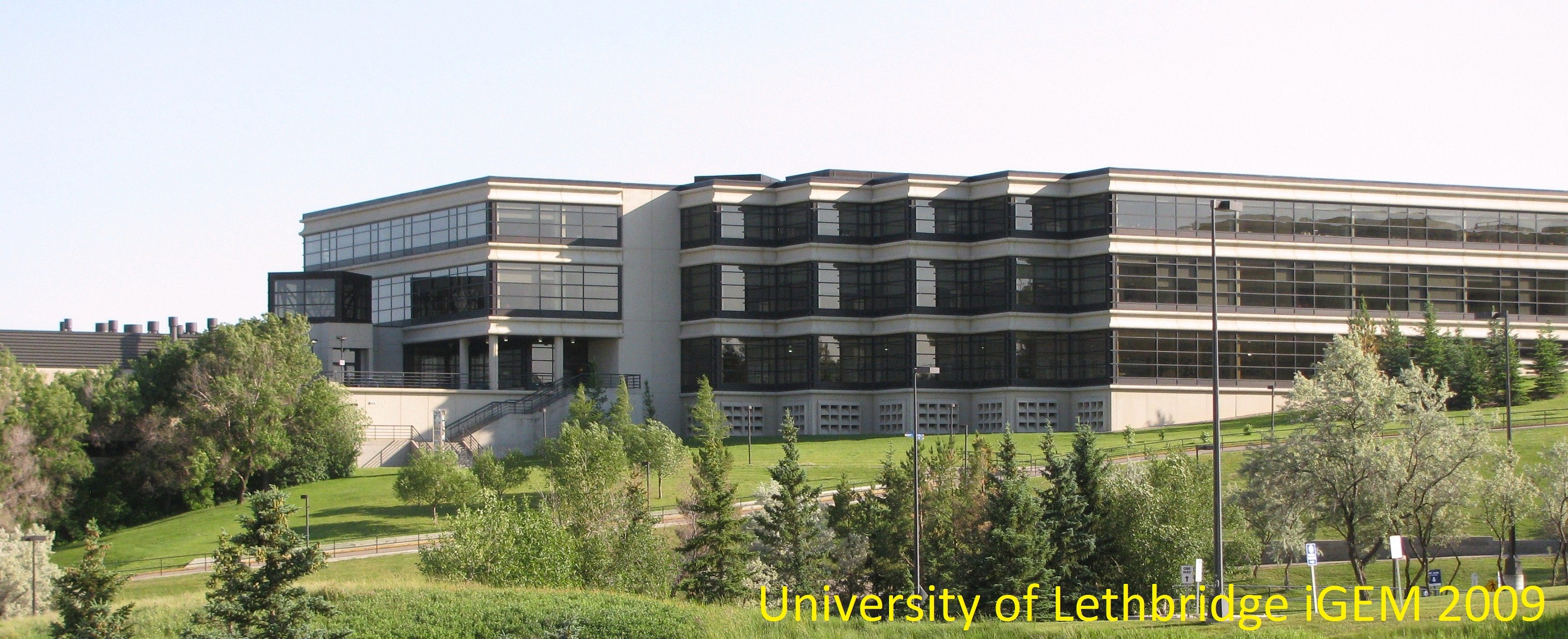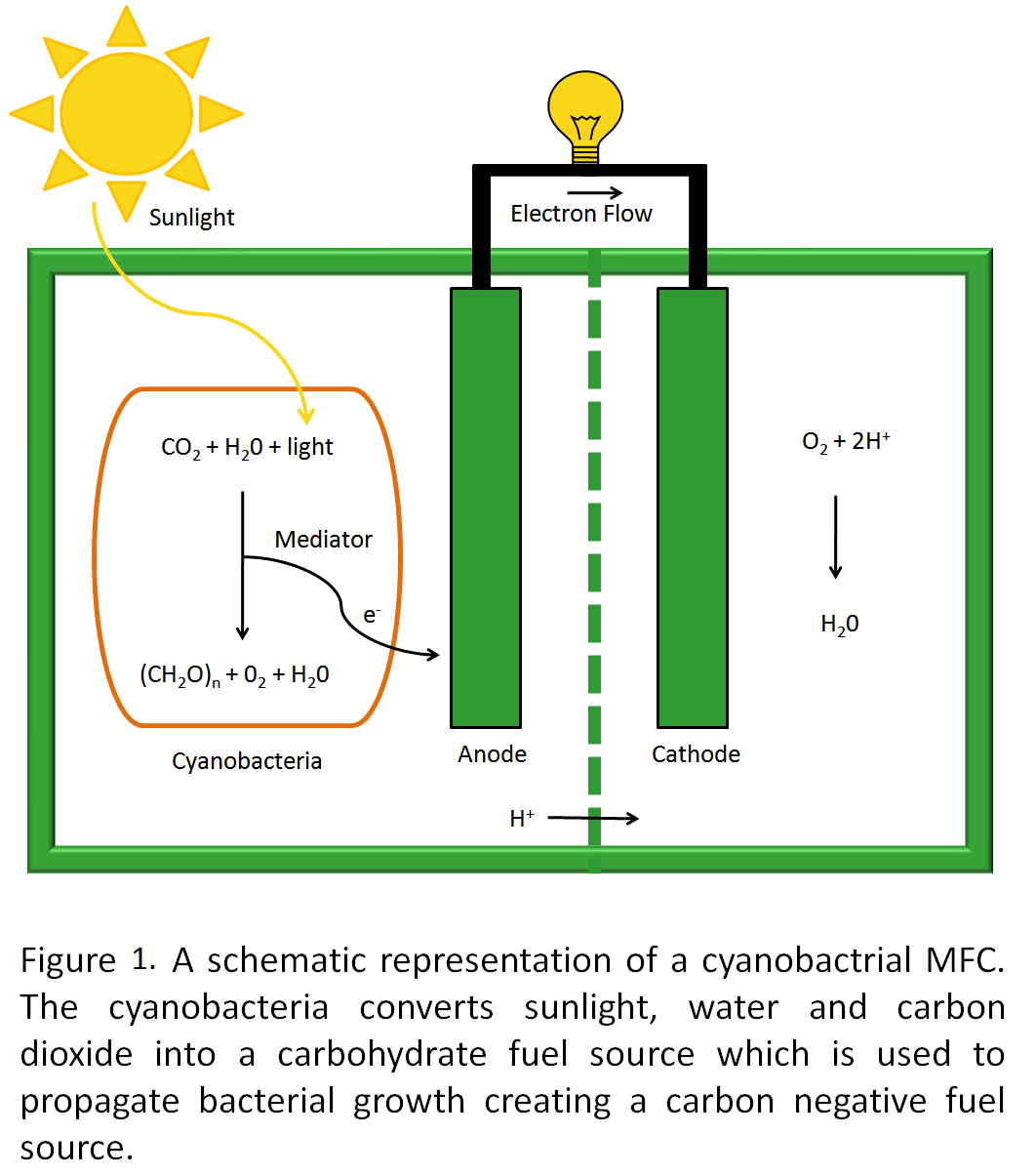Team:Lethbridge
From 2009.igem.org
(→University of Lethbridge Sponsors) |
(→University of Lethbridge Supporters) |
||
| (27 intermediate revisions not shown) | |||
| Line 5: | Line 5: | ||
[[Image:Uoflbanner.jpeg|965px]] | [[Image:Uoflbanner.jpeg|965px]] | ||
| + | |||
<html> | <html> | ||
| Line 241: | Line 242: | ||
</ul></li> | </ul></li> | ||
| - | <li><a class="qmparent" href="https://2009.igem.org/Team:Lethbridge/Ethics" style="width: | + | <li><a class="qmparent" href="https://2009.igem.org/Team:Lethbridge/Ethics" style="width:40px;">Ethics and Safety</a> |
<ul> | <ul> | ||
<li><a href="https://2009.igem.org/Team:Lethbridge/Ethics#Ethics_and_SynBio" style="width:80px;">Ethics and Synbio</a></li> | <li><a href="https://2009.igem.org/Team:Lethbridge/Ethics#Ethics_and_SynBio" style="width:80px;">Ethics and Synbio</a></li> | ||
<li><a href="https://2009.igem.org/Team:Lethbridge/Ethics#The_Survey">The Survey</a></li> | <li><a href="https://2009.igem.org/Team:Lethbridge/Ethics#The_Survey">The Survey</a></li> | ||
| - | </ul></li> | + | <li><a href="https://2009.igem.org/Team:Lethbridge/Ethics#Safety">Safety</a></li> |
| + | </ul></li> | ||
| - | <li><a class="qmparent" href="https://2009.igem.org/Team:Lethbridge/Notebook" style="width: | + | <li><a class="qmparent" href="https://2009.igem.org/Team:Lethbridge/Notebook" style="width:3px;">Notebook</a> |
<ul> | <ul> | ||
| Line 270: | Line 272: | ||
<li><a href="https://2009.igem.org/Team:Lethbridge/Team_Meetings#September">September</a></li> | <li><a href="https://2009.igem.org/Team:Lethbridge/Team_Meetings#September">September</a></li> | ||
<li><a href="https://2009.igem.org/Team:Lethbridge/Team_Meetings#October">October</a></li> | <li><a href="https://2009.igem.org/Team:Lethbridge/Team_Meetings#October">October</a></li> | ||
| - | </ul></li> | + | <li><a href="https://2009.igem.org/Team:Lethbridge/Team_Meetings#Events">Events</a></li> |
| + | </ul></li> | ||
<li><a href="https://2009.igem.org/Team:Lethbridge/Modeling" style="width:10px;">Modeling</a></li> | <li><a href="https://2009.igem.org/Team:Lethbridge/Modeling" style="width:10px;">Modeling</a></li> | ||
| Line 284: | Line 287: | ||
<li><a href="https://2009.igem.org/Team:Lethbridge/Collaboration" style="width:25px;">Collaboration</a></li> | <li><a href="https://2009.igem.org/Team:Lethbridge/Collaboration" style="width:25px;">Collaboration</a></li> | ||
<li><a href="https://2009.igem.org/Team:Lethbridge/Criteria" style="width:1px;">Judging</a></li> | <li><a href="https://2009.igem.org/Team:Lethbridge/Criteria" style="width:1px;">Judging</a></li> | ||
| - | <li><a href="https://2009.igem.org/Team:Lethbridge/videos" style="width: | + | <li><a href="https://2009.igem.org/Team:Lethbridge/videos" style="width:117px;">Extra Information on SynBio</a></li> |
<li class="qmclear"> </li></ul> | <li class="qmclear"> </li></ul> | ||
| Line 296: | Line 299: | ||
==Project Overview== | ==Project Overview== | ||
| - | + | [[Image:Biobattery.png|right|275px]] | |
| - | The | + | |
| + | The issues surrounding energy production are becoming more prominent with increasing environmental concerns and the rising cost of energy. Microbial fuel cells (MFCs) use biological systems to produce an electrical current. Cyanobacteria are organisms which have been studied in MFCs and have been found to create a current, although not highly efficient (Tsujimura et al., 2001). | ||
| + | |||
| + | |||
| + | We wish to increase the efficiency of the cyanobacteria MFC by introducing microcompartments to create a BioBattery. The microcompartments are created by the production of the protein lumazine synthase forms icosahedral capsids. As a proof of principle we will create this system within Escherichia coli and target two different fluorescent proteins within the microcompartment to observe fluorescence resonance energy transfer. Furthermore, we will be exploring a novel method for the mass production of uniform nanoparticles, which is more efficient and cost effective than current methods. | ||
| + | |||
| + | '''References''' | ||
| + | |||
| + | Tsujimura, S., Wadano, A., Kano, K., and Ikeda, T., (2001). Photosynthetic | ||
| + | bioelectrochemical cell utilizing cyanobacteria and water-generating | ||
| + | oxidase. Enzyme and Microbial Technology. 29, 225-231 | ||
==University of Lethbridge Sponsors== | ==University of Lethbridge Sponsors== | ||
| Line 308: | Line 321: | ||
<body> | <body> | ||
| - | <table width=" | + | <table width="965" border="0.5"> |
<tr> | <tr> | ||
<td> | <td> | ||
| Line 332: | Line 345: | ||
</tr> | </tr> | ||
</table> | </table> | ||
| + | |||
</body> | </body> | ||
</html> | </html> | ||
| + | |||
| + | |||
| + | |||
<html> | <html> | ||
| Line 543: | Line 560: | ||
</body> | </body> | ||
</html> | </html> | ||
| + | |||
| + | ==University of Lethbridge Supporters== | ||
| + | |||
| + | The University of Lethbridge iGEM Team would like to thank the many individuals who have given us their time, money or support. Including, but not limited to: | ||
| + | |||
| + | The Wieden Lab | ||
| + | |||
| + | The Kothe Lab | ||
| + | |||
| + | The Selinger Lab | ||
| + | |||
| + | The Biochemistry Teaching Lab and coordinators | ||
| + | |||
| + | The University of Lethbridge Student's Union | ||
| + | |||
| + | David Franz | ||
| + | |||
| + | Nathan Puhl | ||
| + | |||
| + | John Thibault | ||
| + | |||
| + | Sebastian Machula | ||
| + | |||
| + | and | ||
| + | |||
| + | Tony Russell | ||
Latest revision as of 03:53, 22 October 2009
- Home
- Team
- Project
- Ethics and Safety
- Notebook
- Meetings
- Modeling
- Parts
- Collaboration
- Judging
- Extra Information on SynBio
Project Overview
The issues surrounding energy production are becoming more prominent with increasing environmental concerns and the rising cost of energy. Microbial fuel cells (MFCs) use biological systems to produce an electrical current. Cyanobacteria are organisms which have been studied in MFCs and have been found to create a current, although not highly efficient (Tsujimura et al., 2001).
We wish to increase the efficiency of the cyanobacteria MFC by introducing microcompartments to create a BioBattery. The microcompartments are created by the production of the protein lumazine synthase forms icosahedral capsids. As a proof of principle we will create this system within Escherichia coli and target two different fluorescent proteins within the microcompartment to observe fluorescence resonance energy transfer. Furthermore, we will be exploring a novel method for the mass production of uniform nanoparticles, which is more efficient and cost effective than current methods.
References
Tsujimura, S., Wadano, A., Kano, K., and Ikeda, T., (2001). Photosynthetic bioelectrochemical cell utilizing cyanobacteria and water-generating oxidase. Enzyme and Microbial Technology. 29, 225-231
University of Lethbridge Sponsors
 |
 |

|
 |

|
 |
University of Lethbridge Supporters
The University of Lethbridge iGEM Team would like to thank the many individuals who have given us their time, money or support. Including, but not limited to:
The Wieden Lab
The Kothe Lab
The Selinger Lab
The Biochemistry Teaching Lab and coordinators
The University of Lethbridge Student's Union
David Franz
Nathan Puhl
John Thibault
Sebastian Machula
and
Tony Russell
 "
"


